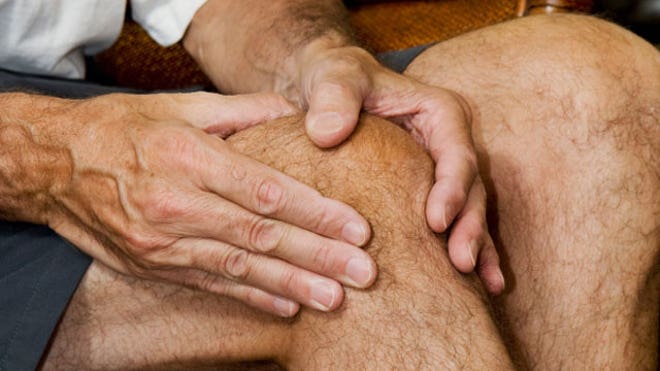
Intensive weight loss together with regular exercise did more to ease knee arthritis than exercise alone for overweight and obese adults in a new U.S. study.
Knee inflammation, pain and functioning all improved more among people who cut back on calories in addition to working out, researchers found.
The greatest benefits were seen among those who lost the most weight, and they tended to be the ones who combined diet and exercise.
“While both the exercise and the diet interventions separately were beneficial, the combination of the two was superior in virtually every outcome,” Stephen Messier, who led the study at Wake Forest University in Winston-Salem, North Carolina, said.
Extra weight is known to raise the risk of knee osteoarthritis, which happens when cartilage around the joint breaks down, causing inflammation, pain and stiffness.
One review found that being overweight doubles a person’s risk of knee osteoarthritis, and being obese quadruples it
For the new study, Messier and his colleagues wanted to see what effect losing weight through a strict diet program would have on arthritis symptoms.
They randomly assigned 454 overweight and obese adults with mild or moderate knee arthritis to 18 months of diet counseling, exercise or both.
For participants on the diet, the goal was to lose at least 10 percent of their starting weight. People replaced some meals with shakes and attended regular weight monitoring and nutrition sessions.
The exercise program involved one hour of physical activity three times per week, including aerobic walking and strength training.
By the end of the study, people assigned to both diet and exercise had lost an average of 23 pounds. That compared to almost 20 pounds in the diet-only group and four pounds among those who only exercised.
Compared to people in the exercise-only group, those who combined diet and exercise had less knee inflammation and pain and better functioning at 18 months.
For example, pain scores measured on a scale of 0 to 20, with higher scores indicating more pain, fell by 3.1 points in the diet plus exercise group and by 1.4 points in the exercise-alone group and about the same in the diet-alone group.
Likewise, on a 0-to-68 scale measuring knee function, people in the combined diet and exercise group improved by an average of 10.5 points, versus 4.7 points among those who only exercised.
People in the diet-alone and the diet plus exercise groups had about the same levels of knee inflammation – both lower than in the exercise-alone group.
“No one expects diet and exercise to have a huge impact” on osteoarthritis, Dr. Amanda Nelson, from the University of North Carolina at Chapel Hill’s Thurston Arthritis Research Center, said.
“The fact that most of the improvements were modest is what we would expect to see.”
Regardless of their group, participants who lost 10 percent of their body weight or more saw greater improvements in inflammation and other arthritis measures than those who dropped less weight, the researchers write in the Journal of the American Medical Association.
Messier told Reuters Health that exercise seems to have benefits for osteoarthritis independent of weight loss, so it should remain part of standard care.
Although not all patients may be able to find the same support provided in the study, many communities have YMCAs and other places people can go to get help with weight-loss and exercise goals, he noted.
Some people, Messier said, “just need help. If you have someone who is sedentary for most of their life … to just ask them, ‘Well, I think you need to lose a few pounds and exercise’ and then walk out the door, it’s not enough.”
Nelson, who wasn’t involved in the new research, told Reuters Health that people should also turn to family members and community groups for support, if possible.
Although a 10-percent weight loss continues to be the goal for overweight people with arthritis, even two pounds is better than nothing, she said.
“Patients should be encouraged that any weight loss is likely to be beneficial, and the more they can do the better,” Nelson said
Source: Reuters.com







 A neurosurgery patient treated at a New Hampshire hospital this spring did have a rare brain disorder known as Creutzfeldt-Jakob Disease, health officials confirmed Friday. That means that 15 other people in three states may have been exposed to the invariably deadly infection through potentially tainted surgical equipment.
A neurosurgery patient treated at a New Hampshire hospital this spring did have a rare brain disorder known as Creutzfeldt-Jakob Disease, health officials confirmed Friday. That means that 15 other people in three states may have been exposed to the invariably deadly infection through potentially tainted surgical equipment.